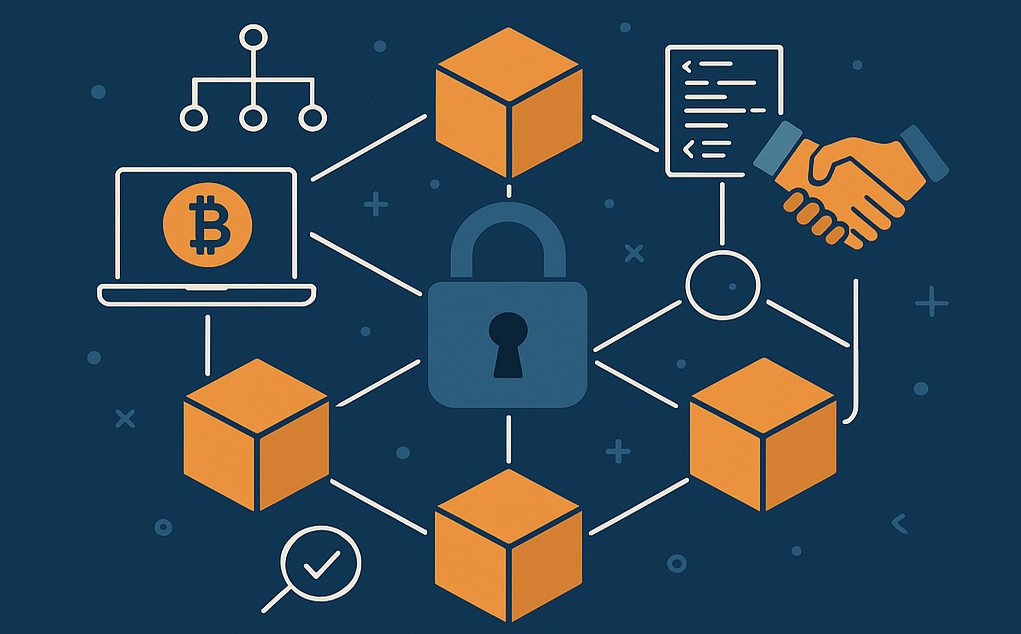Blockchain Explained: Understanding the Fundamentals of Distributed Ledgers & Trust-less Systems
Welcome to an insightful look into the fundamentals of blockchain technology. This article aims to provide a high-level understanding of how a blockchain operates, its various applications, and its inherent limitations.
What Exactly is a Blockchain?
At its heart, a blockchain is a distinctive kind of database, often referred to as a distributed ledger. While blockchain is one of the most prevalent types of Distributed Ledger Technology (DLT) systems, leading to the terms often being used interchangeably, it's important to remember that not all DLT systems are blockchains.
Think of a blockchain as a digital spreadsheet where information is stored. However, unlike a typical spreadsheet, data on a blockchain is subject to a strict set of rules:
- Data can only be added.
- Once added, data cannot be removed or modified.
- Every new piece of data must reference the piece that came immediately before it.
How Blocks Form the Chain
Information is added to a blockchain in bundles called blocks, which follow a specific format. The entire collection of these blocks is what constitutes the blockchain database. A defining feature of blockchains is how each block is built directly on top of the last one, with every individual block containing information that explicitly points back to its immediate predecessor.
The Critical Role of Hashing
The connection between blocks is forged through a process known as hashing. Hashing involves taking any size of input data (such as text, images, or videos) and passing it through mathematical operations called hash functions. The output, or "hash," is always a fixed-size string, with its length determined by the specific hashing algorithm in use.
In blockchain systems, each block is assigned its own unique hash, which serves as its one-of-a-kind identifier. Crucially, when a new block is created, its hash is generated based on the hash of the block that came before it. This ensures that each block hash is unique; the chances of two different pieces of data producing the exact same hash are virtually impossible, a scenario known as a "hash collision" in cryptography. Being resistant to these hash collisions is precisely what makes blockchain data tamper-proof, preventing any unauthorized alterations.
Why Blockchain is So Valuable: Beyond Traditional Databases
Traditional databases face a significant challenge: modifying or copying data is straightforward, which raises concerns about how to store vital information in a way that everyone can trust. Historically, the solution has been to place trust in the entities responsible for storing the data. However, this trust can be misplaced or even abused.
This is where blockchain offers a profound advantage:
- No Central Authority: The greatest benefit of blockchain is that there is no single central authority that everyone must trust for the system to function.
- Single Source of Truth: This allows a blockchain to act as a single source of truth in the digital world. A network of users can collectively agree on the database's contents and synchronize any new updates.
- Peer-to-Peer Network: Blockchains operate on a peer-to-peer architecture, meaning they are made up of a distributed network where every user has equal rights. Updates don't need to go through a central coordinator; instead, every user on the network downloads blocks from others to create their own copy of the database. For these reasons, blockchain is often described as a trust-less system.
The Implications of a Distributed, Single Source of Truth
A distributed network that revolves around a single source of truth brings several powerful implications:
- Security and Redundancy: A blockchain can involve tens of thousands of users, each holding their own copy and communicating with peers. This means that even if many users go offline, the network will continue to operate reliably.
- Immutability: Once a block has been added to the blockchain, it is considered permanent and cannot be changed.
- Trustlessness and Transparency: You don't need to trust any single entity, and because everyone possesses a copy of the blockchain, they can see and verify all the data it holds, fostering complete transparency.
Moving forward, understanding the history of blockchain technology will further illuminate its evolution and impact.
Summary:
To conclude, we've seen that blockchain technology offers a distinctive and powerful approach to data management. At its core, it functions as a specialized distributed ledger database where information is meticulously organised into "blocks". A defining characteristic is that data can only be added, not removed or modified, with each new block cryptographically referencing its predecessor.
This crucial connection is established through hashing, a process that assigns a unique, tamper-proof identifier to each block, making the entire chain highly resilient to any unauthorized alteration. Unlike conventional systems that rely on a central authority, blockchain operates as a peer-to-peer, "trust-less" network. This means a distributed network of users, each maintaining their own copy, can collectively agree upon a single, consistent source of truth. This innovative architecture yields substantial advantages, including enhanced security and redundancy, the immutability of recorded data, and complete transparency for all participants.

